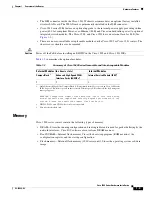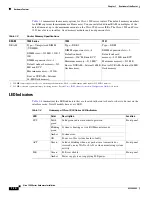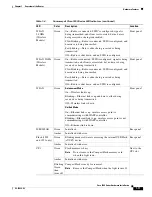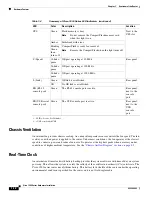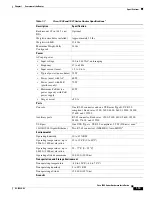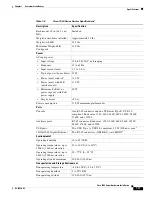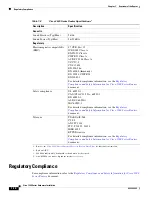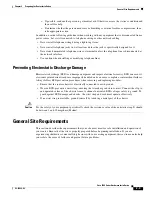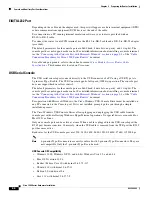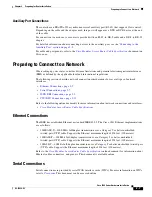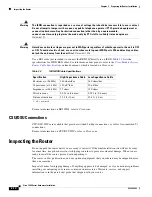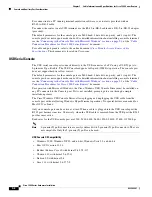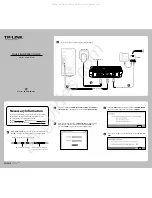
2-4
Cisco 1900 Series Hardware Installation
OL-19084-02
Chapter 2 Preparing for Router Installation
General Site Requirements
Power Supply Considerations
Check the power at your site to ensure that you are receiving “clean” power (free of spikes and noise).
Install a power conditioner if necessary.
Warning
The device is designed for connection to TN and IT power systems.
Statement 1007
The AC power supply includes the following features:
•
Autoselects either 110 V or 220 V operation.
•
All units include a 6-foot (1.8-meter) electrical power cord. (A label near the power cord indicates
the correct voltage, frequency, current draw, and power dissipation for the unit.)
Site Environment
The Cisco 1900 series router is designed for placement on a desktop, rack-mounted or wall mounted.
The location of your router is an extremely important consideration for proper operation. Equipment
placed too close together, inadequate ventilation, and inaccessible panels can cause malfunctions and
shutdowns, and can also make maintenance difficult. Plan for access to both front and back panels of the
router.
When planning your site layout and equipment locations, remember the precautions described in the
“Site Configuration” section on page 2-4
to help avoid equipment failures and reduce the possibility of
environmentally caused shutdowns. If you are currently experiencing shutdowns or an unusually high
number of errors with your existing equipment, these precautions may help you isolate the cause of the
failures and prevent future problems.
Site Configuration
The following precautions will help you plan an acceptable operating environment for your router and
will help you avoid environmentally caused equipment failures:
•
Make sure that the room where your router operates has adequate circulation. Electrical equipment
generates heat. Without adequate circulation, ambient air temperature may not cool equipment to
acceptable operating temperatures. See the
“Chassis Airflow Diagram” section on page 4-3
.
•
Always follow the ESD-prevention procedures described in the
“Preventing Electrostatic Discharge
Damage” section on page 2-3
to avoid damage to equipment. Damage from static discharge can
cause immediate or intermittent equipment failure.
•
Make sure that the chassis cover and module back panels are secure. All empty interface card slots
must have filler panels installed. The chassis is designed to allow cooling air to flow within it,
through specially designed cooling slots. A chassis with uncovered openings creates air leaks, which
may interrupt and reduce the flow of air across internal components.


